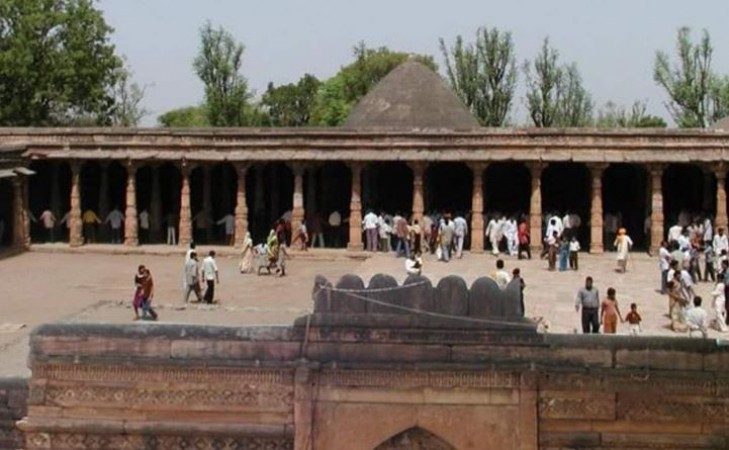
Dhar: On the 80th day of their survey, the Central Archaeology Department team conducted a detailed examination at Dhar Bhojshala, Madhya Pradesh. The ASI team worked diligently from morning until evening on June 9, uncovering over 79 artefacts, including various small and large remnants, and several murtis of gods and goddesses.
Significant Finds on June 9:
The Hindu community hailed June 9 as a historic day, as a remarkable number of artefacts were unearthed during the survey at Bhojshala. On this day, the Archaeological Survey of India team opened a previously closed room, revealing approximately 79 remnants, including murtis of Bhagwan Ganesha, Maa Vagdevi, Maa Parvati, Maa Mahishasura Mardini, Hanuman, and other deities, along with Shankh Chakra Shikhar with Sanatani figures.
The 8 by 10 feet closed room was opened in the presence of representatives from both parties, with videography and photography documenting the process. Ashish Goyal, the petitioner from Hindu Front for Justice, described it as the biggest achievement so far. He detailed that after removing the floor and soil, the first murtis discovered were of Bhagwan Ganesha, Maa Parvati, Mahishasura Mardini, and Hanuman, with some murtis measuring between one and a half to two and a half feet tall.
Additional Discoveries Near Northern Side and Yagyashala:
During the soil leveling in the northern part of Bhojshala, about six remnants, including the base of a pillar and its middle part, were found. Additionally, six significant Sanatani remains were discovered near the Yagyashala. These findings were included in the ongoing ASI investigation. Gopal Sharma, a representative of the Hindu side, mentioned that due to rain, the trench around Bhojshala is being refilled with soil. The remains found on Sunday marked the highest number uncovered in a single day during the survey so far.
According to the official website of the Dhar district, the Bhojshala temple was built by Raja Bhoj, a prominent king of the Parmar dynasty who ruled from 1000 to 1055 AD. Historical records indicate that in 1305 AD, Alauddin Khilji attacked Bhojshala, and in 1401 AD, Dilwar Khan Gauri constructed a mosque in part of Bhojshala. Later, in 1514 AD, Mahmud Shah Khilji built another mosque in a different section. During 19th-century excavations, a statue of Saraswati Devi was discovered, which the British subsequently took to London, where it is now housed in a museum. There is ongoing controversy regarding the statue's return to India.
After India's independence, disputes increased over the use of Bhojshala for worship and namaz. The court has currently allowed Hindus to worship on Tuesdays and Muslims to offer namaz on Fridays. Conflicts arise especially when Basant Panchami falls on a Friday, leading to disputes over access. The ongoing ASI survey is being conducted under court orders.
Kirtivardhan Singh Assumes Role as Union Minister of State for External Affairs
Kannada Actor Darshan Thoogudeepa and Wife Arrested in Bengaluru Murder Case
Realme GT 6 Launched: Snapdragon 8s Gen 3, 120W SUPERVOOC Charger, and More!